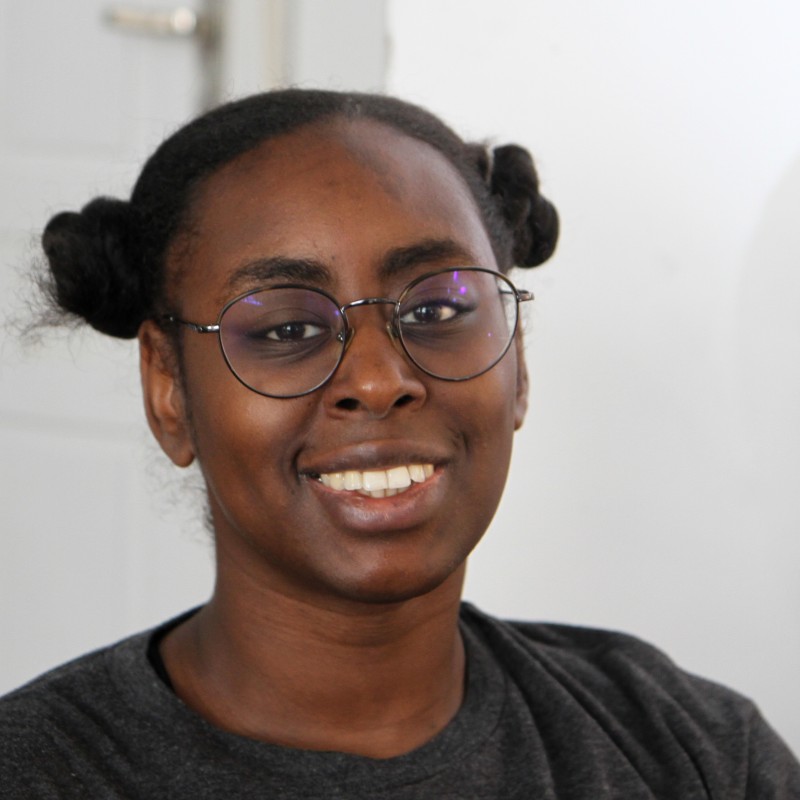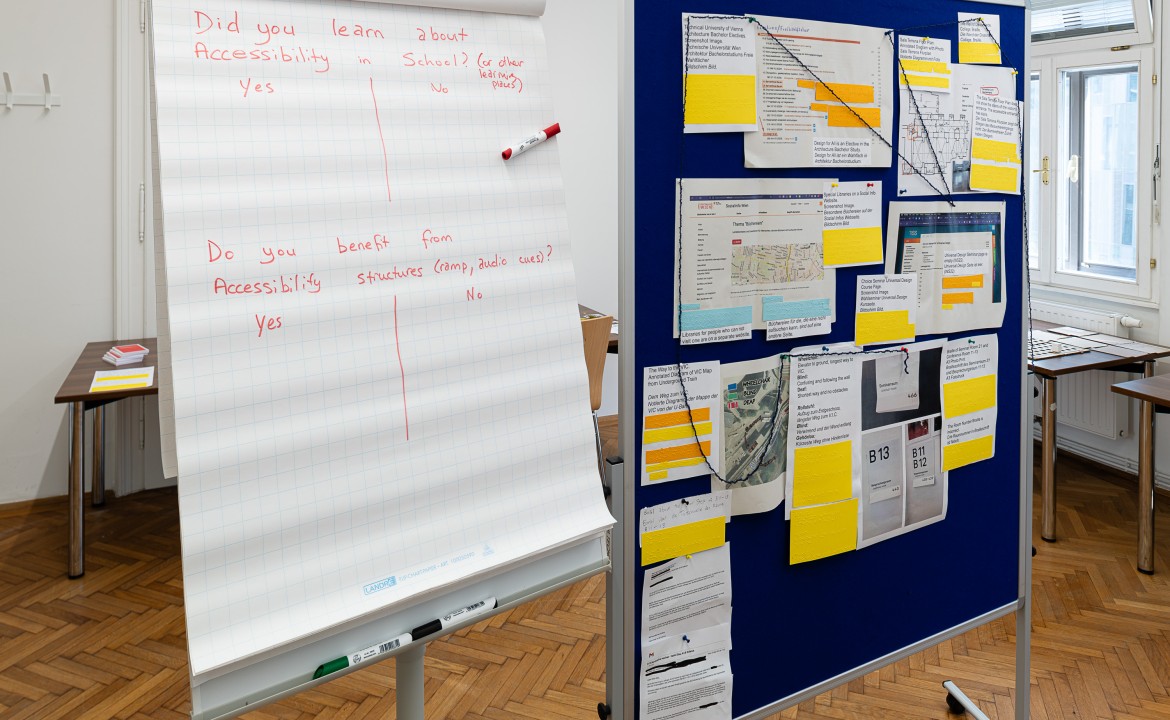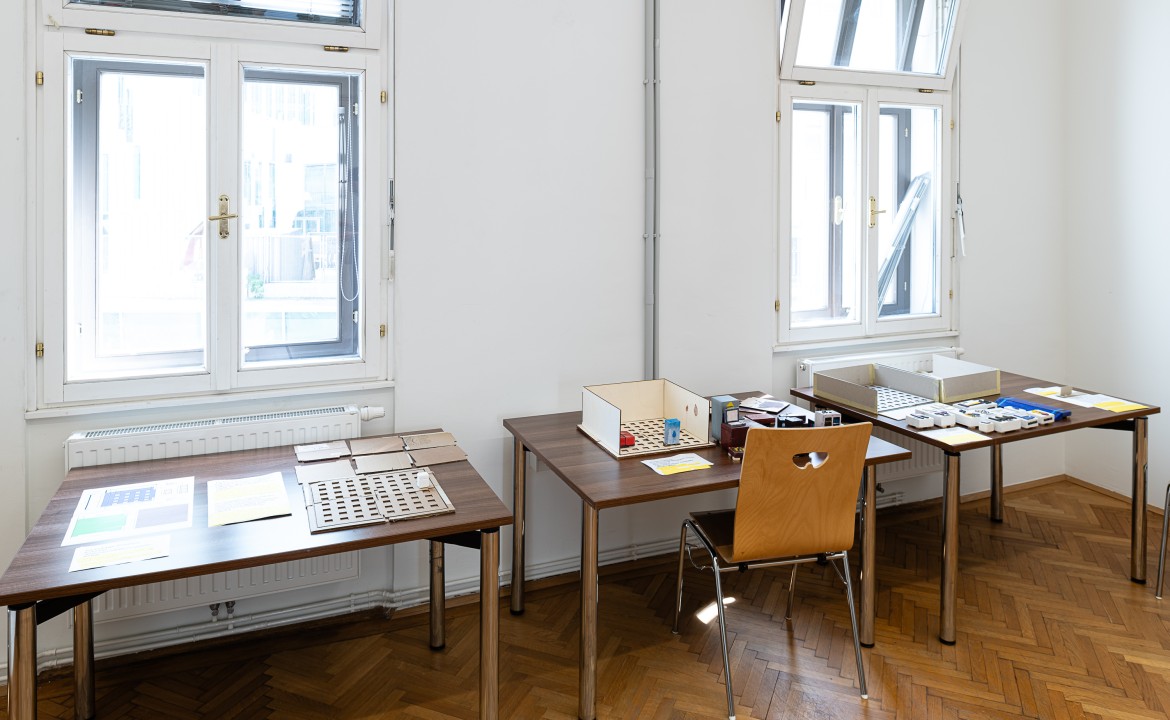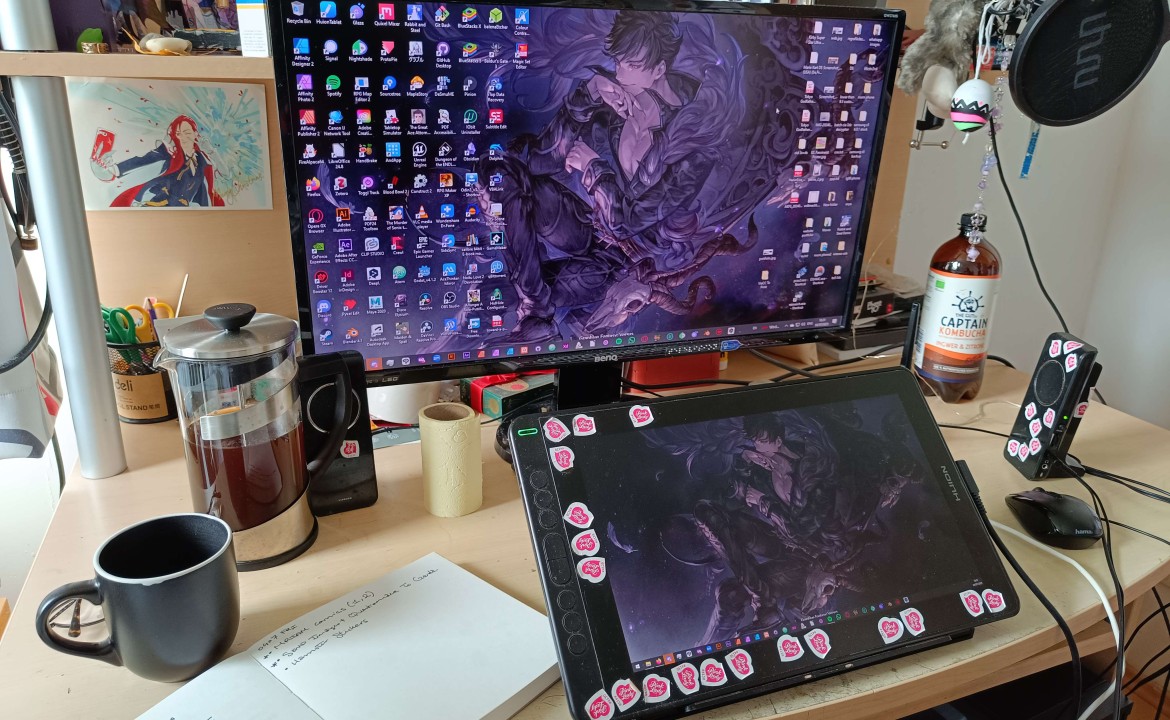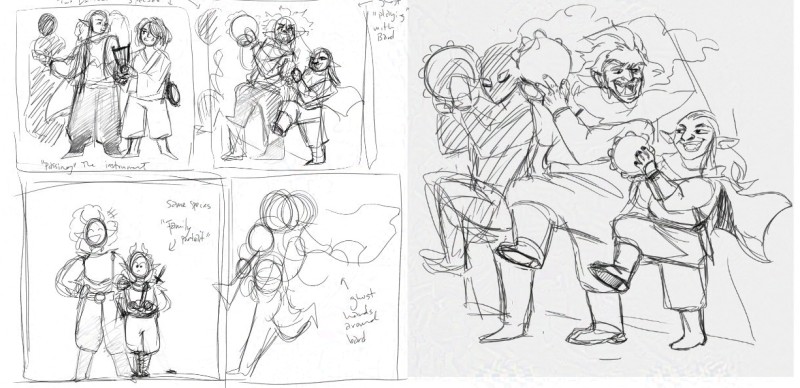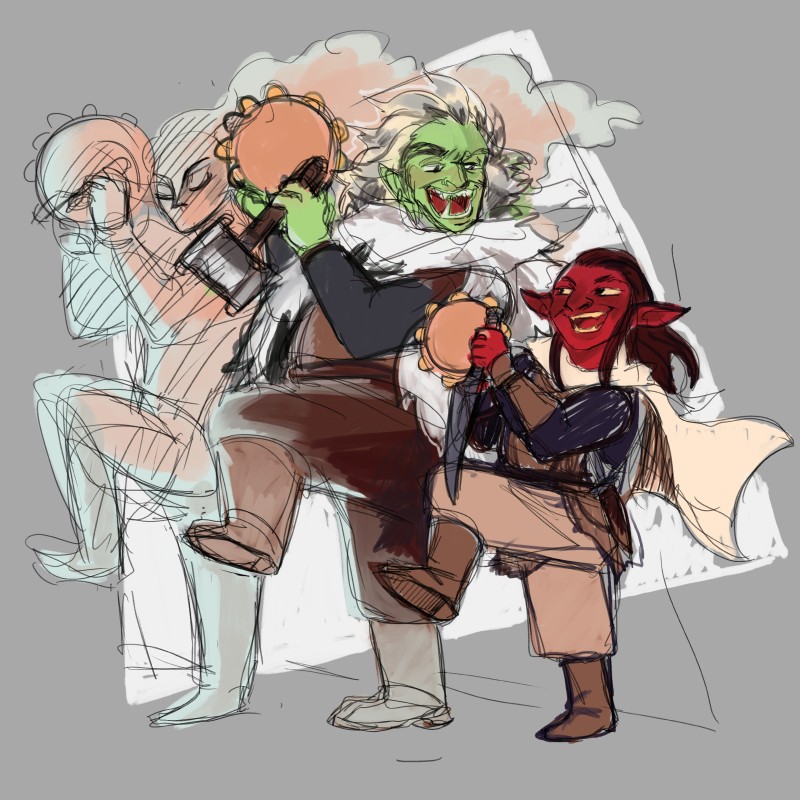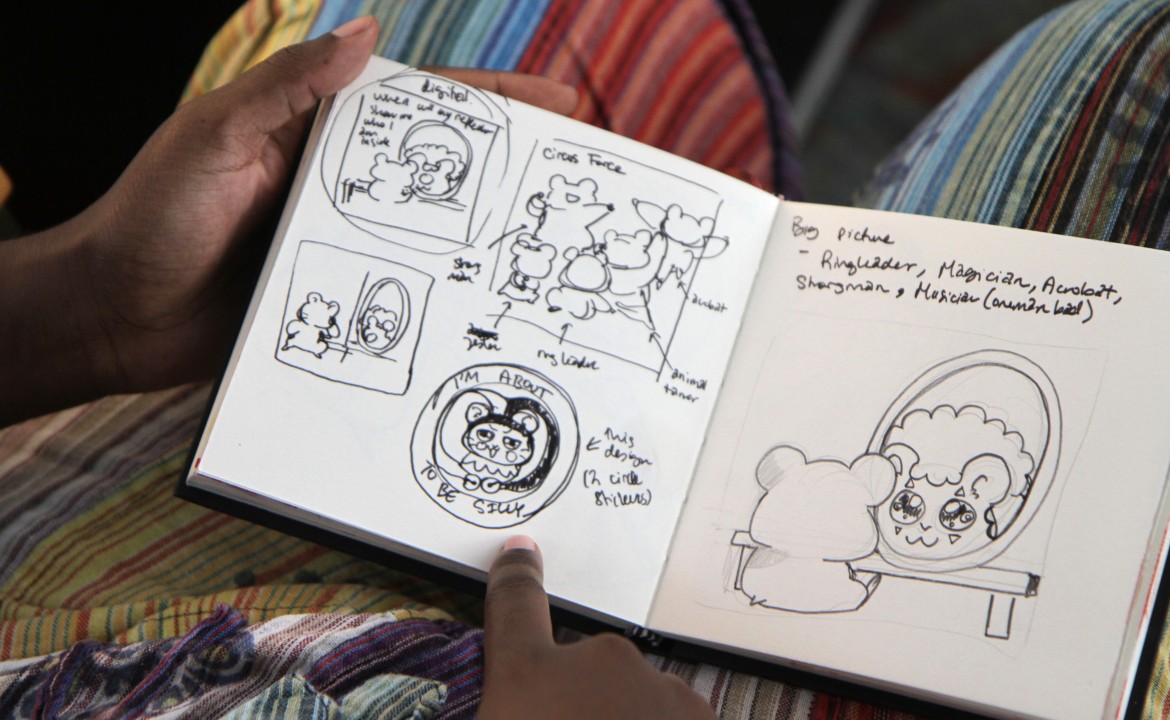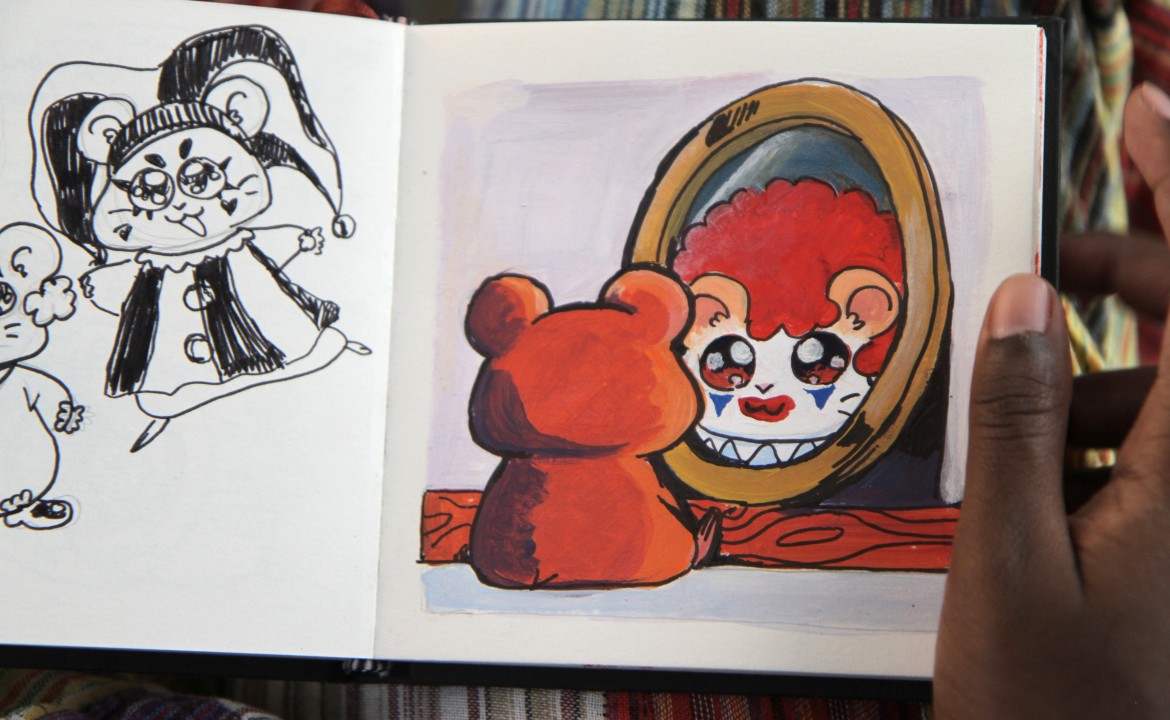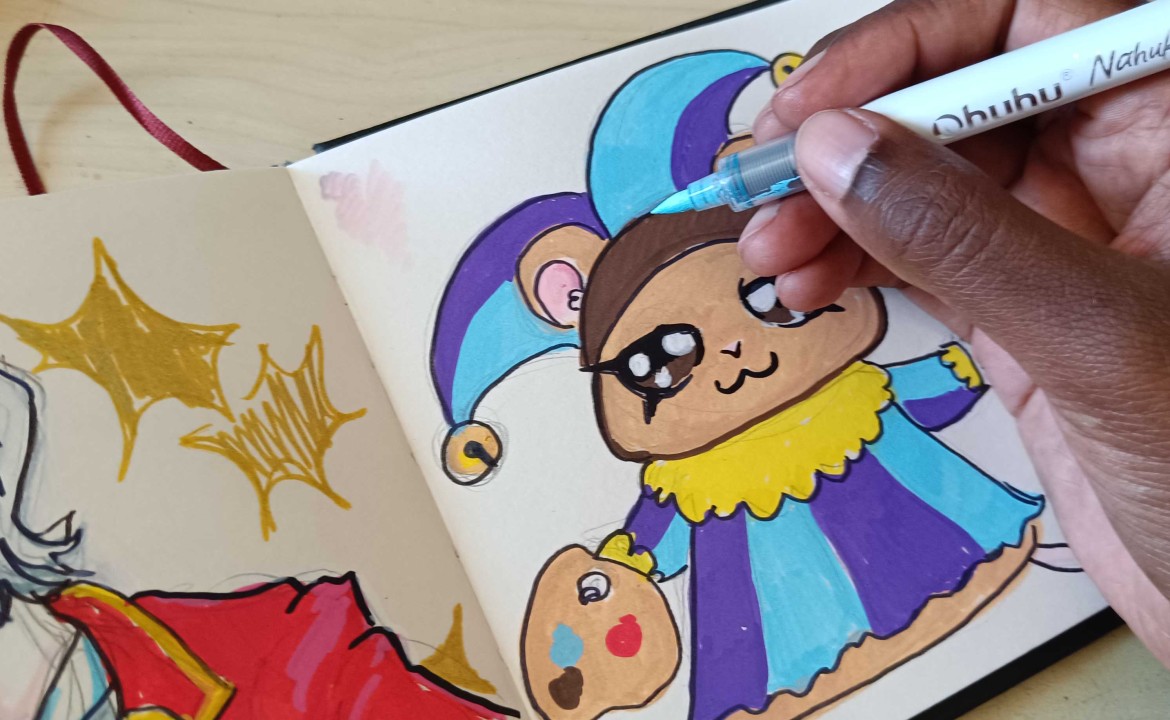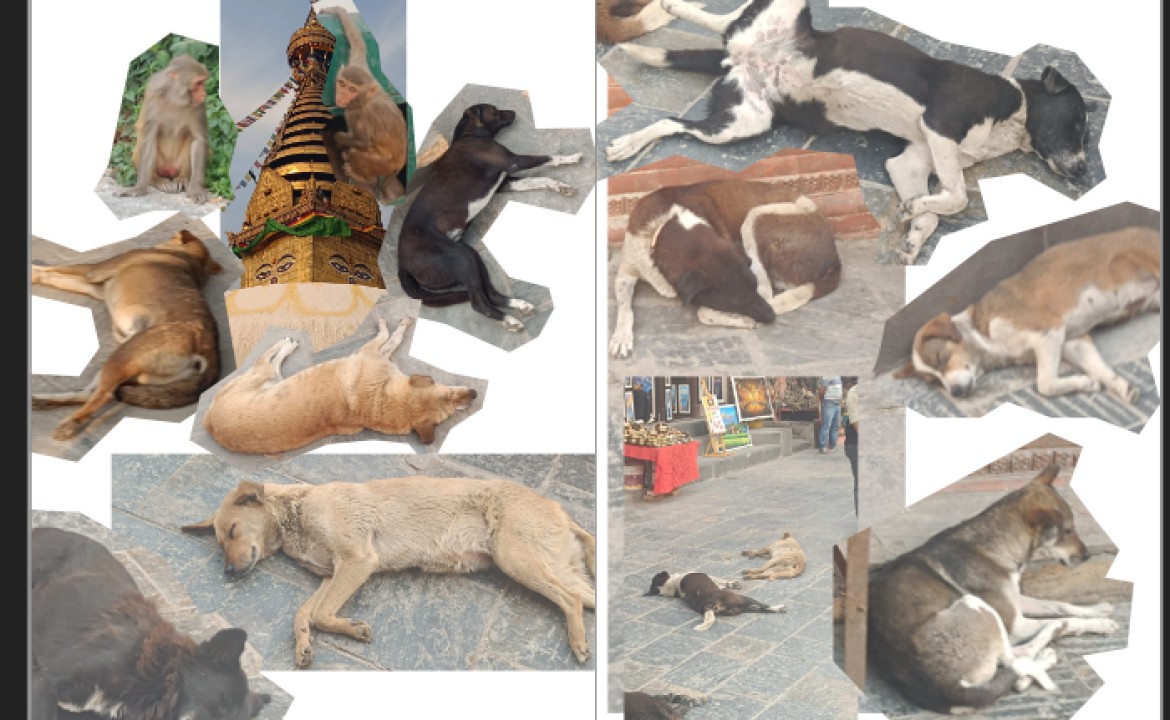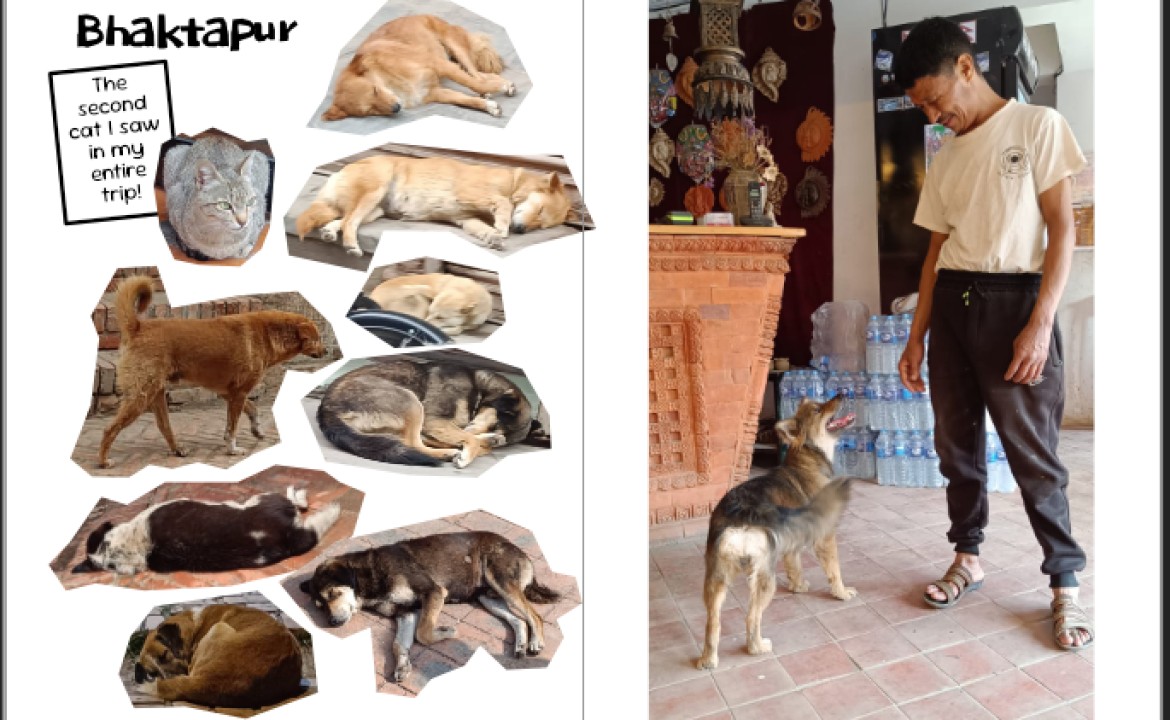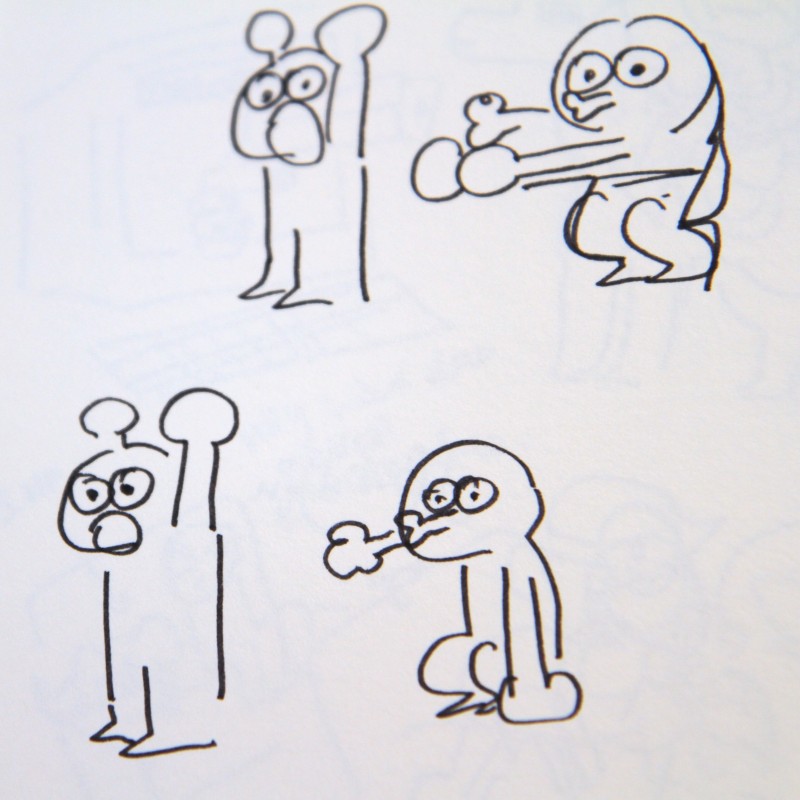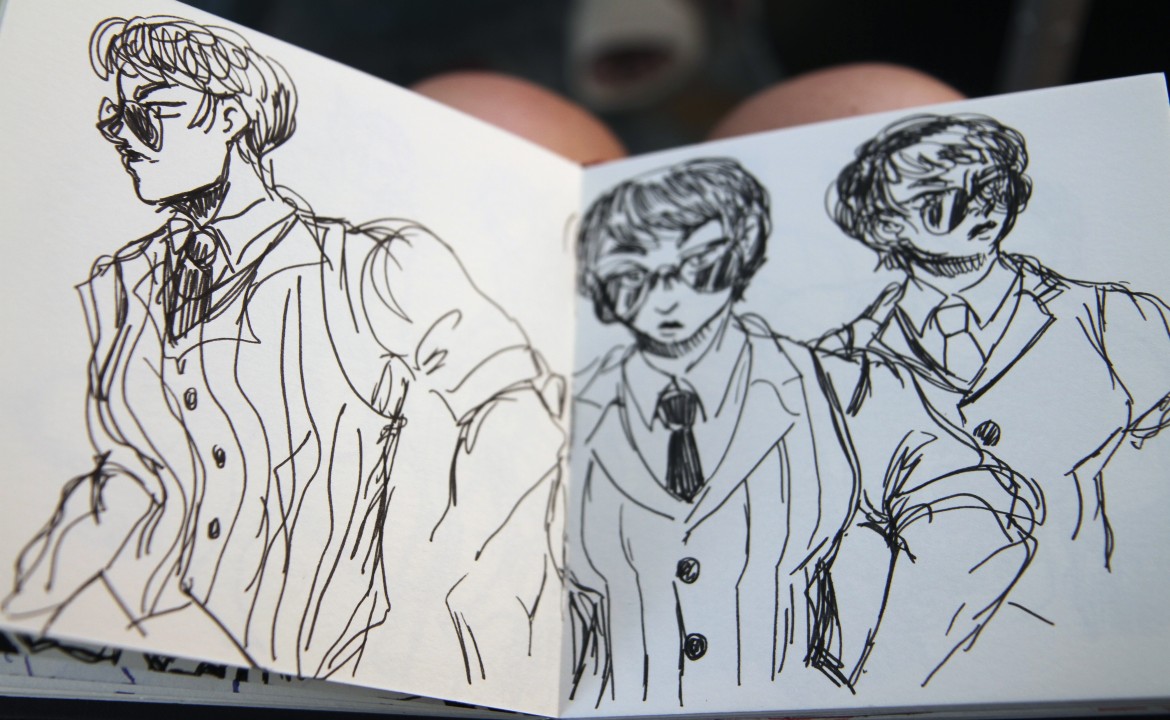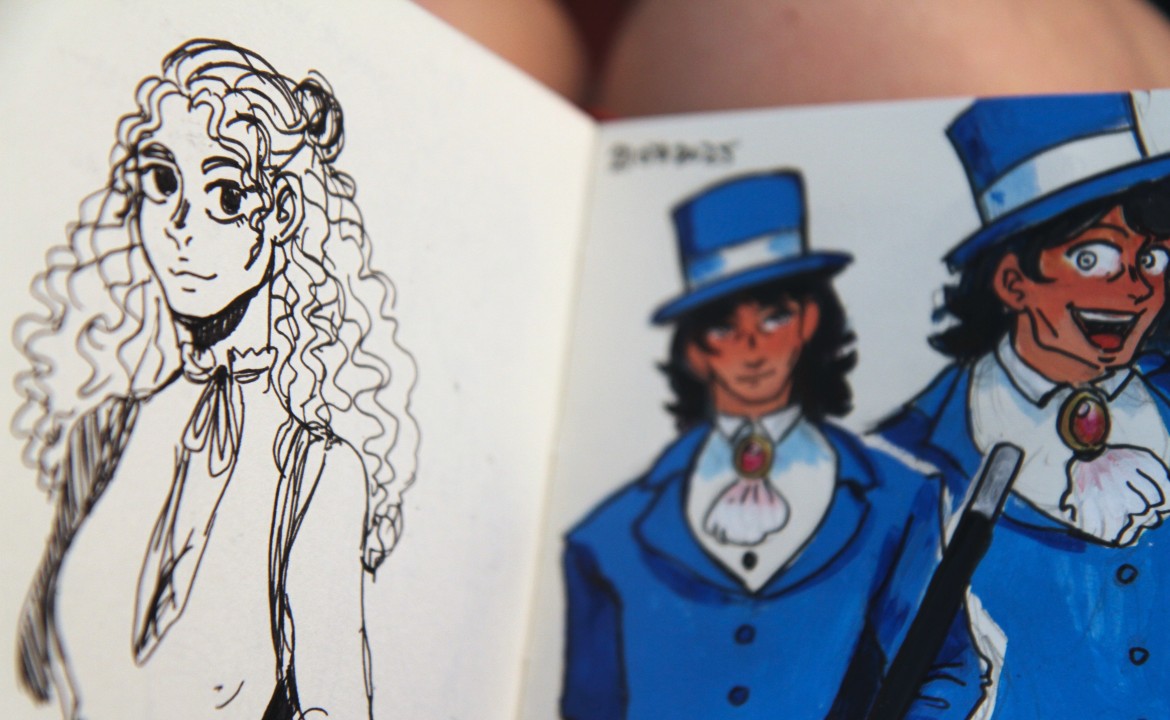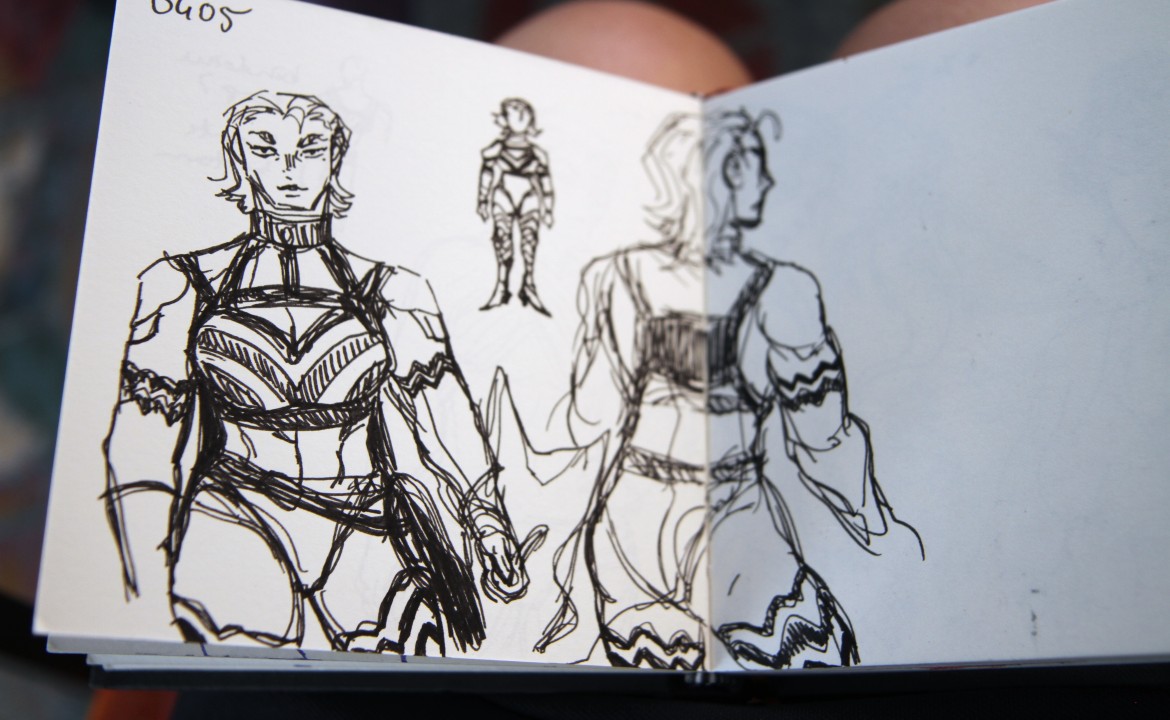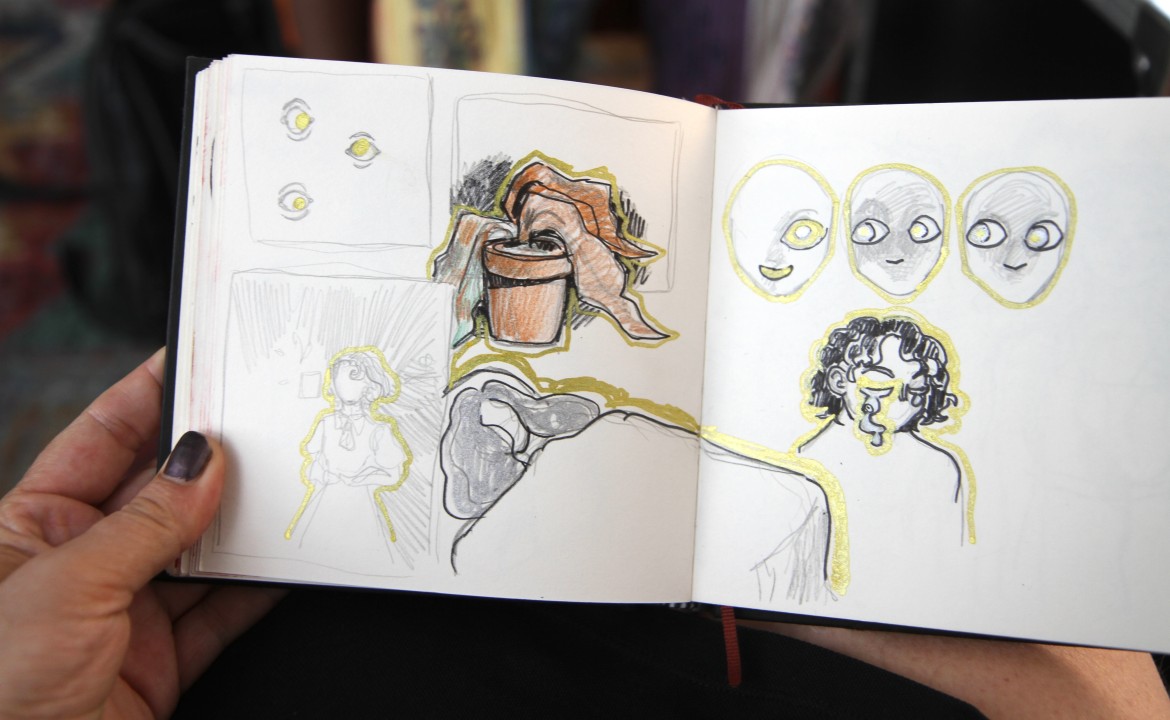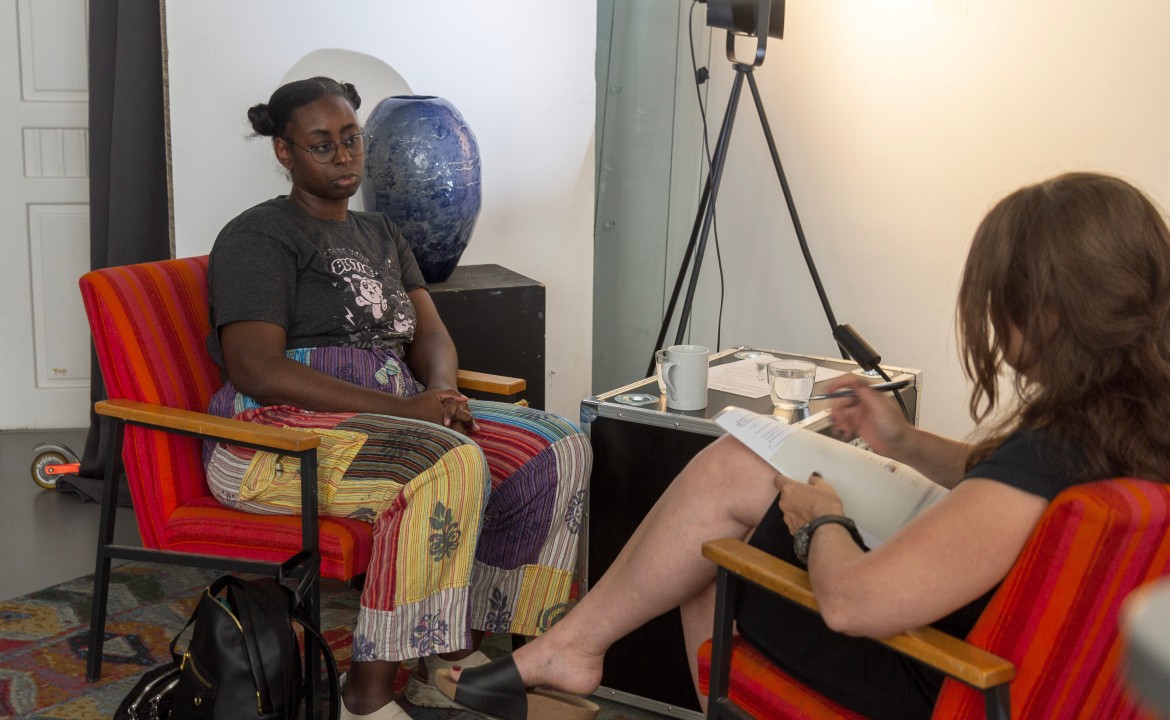Dear Hanin, it's been two years that you have graduated with Art and Science - time flies. How are you and what are you working on right now?
I just finished wrapping up a Dungeons & Dragons Supplement called Kaya’s Guide to The Fabric of History! It contains new subclasses related to history and community and I did the character design and illustration of all the different subclasses that are featured. At the time of this interview, it is sold in a bundle that will go towards charity for legal aid in the US. It is sold under our group 5th Dimensional Tavern on itch.io.
As a non-computergames-playing-person I have no idea what you are talking about [smiles], except the words "character design" and "illustration" sound familiar. But for an illustrator, this game scene opens up enormous possibilities for creation. What kind of material or computer programs do you use? Can you describe the process a bit?
For character illustrations I usually draw digitally on my computer with a screen tablet. It’s bit like drawing on paper but it functions as a second screen. For character design, I look at the other writers information and build up on them. The step-by-step process is something that you see in all of media creation from movies to comics to video games.
Can you please tell us a bit about the structure, what, for example, is a supplement? How does it work adding fan based stories to an existing computer game?
Sometimes, the developers of a work allow people to create content based on the work, so long as they follow some rules. Some are a bit stricter than other but generally, they ask for a line saying that they are not affiliated with the developers/publishers of the games, and to not use their official logos. Wizards of the Coast developed a Tabletop Roleplaying Game called Dungeons & Dragons. The DnD system is free to tryout, they publish stories and extra content at a cost for players to explore the system. Those are called Supplementary Works or Supplements. In the case of Kaya's Guide, my friends and I homebrewed some content ourselves to complement the system for players to try out. Players who try out our content not only understand that it is a fan-made work, and it is also free advertisement for Wizards of the Coast.
How did you actually start this particular project?
What amazes me a lot is not only your drawing skills, but also that you are creating and designing characters. You bring your lines and circles into life. Maybe you would like to reveal a bit to the readers of your working process, for example your entry for the Clown Con 2025 where you are also represented?
Luckily, so many different analogue drawing materials exist nowadays and they become more every day; despite digital times. What are these new acrylic markers?
How about other projects? Do you usually find them or do they find you?
I really envy you for your skills in drawing. It's wonderful how you capture the bodies' postures, movings and views. Also,
if you show the same character in different states, one can recognize that it is the same character. I guess you drew before
you were able to walk? [smiles]
Yes, I was drawing for a very long time, ever since I was little. I learned how to draw characters by just copying the characters
and creatures I saw in TV or in a game.
I also drew my own comics and stories, some fan comics, some original stories, so I already learned how to draw a character
from different angles. I never really got into the specific details of why something looked good like from an art fundamentals
perspective, I sorta just picked up what looked good and what didn't. I think I only started to really pay attention during
my bachelor's, when I was designing characters as part of a module.
Where do you get inspired?
Everywhere! But mostly in media like games, films, music, books and sketchbook vlogs; also during playing games with others. Dungeons & Dragons (and by extension Pathfinder) is a collaborative activity where we, the players “and” not "only" the storytellers contribute ideas.
Travelling to new places and experiencing new things is not only good for the brain but also helps contextualise media. When
I travelled to Nepal for a wedding, my time there contextualised a game that I played which had Nepal as one of the influences
of the setting. Of course, I could have just looked at some pictures at home, but really seeing the country and its people
and nature in person puts it all into perspective.
Can you tell us more about the podcast project? It is aired on Radio Orange 94,0 and we can listen to you speaking German.
The podcast is called Voice of Mendy, we talk about the war in the Sudan but also culture, history, politics, wildlife, etc, mainly from a European lens. The
main goal of the podcast is to highlight Sudanese Diaspora voices and also to get people interested in Sudan as a country.
It's on Radio Orange, the Free Radio.
It is always nice seeing you when you come by to the Uni or attend class exhibitions. I assume, you are in good contact with former fellow students?
Yes, I am in contact with former AS Students! I visit their exhibitions when I can and otherwise visit them as friends. As
for current AS Students, I mainly visit through department parties and exhibitions.
Thanks a lot Hanin, for the insights into your current live and work practices.
Interview: Gerda Tschoerdy Fischbach, August 2026.

